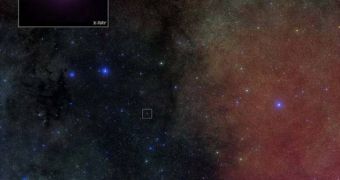A black hole 14 times the size of our own Sun may seem like a really big celestial body, until you learn that there are those hundreds or maybe even thousands of time more massive than the tiny star that allows for life on Earth. The supermassive ones are able to do something that has had astronomers scratching their heads for a long time, namely to self-regulate. They can control the amounts of matter they expel, and thus their own mass. However, this trait was never before thought possible in smaller ones. Experts were proven otherwise only after a decade-long study by the Chandra X-Ray Observatory, which was recently released.
“The supermassive black hole has thousands of stars nearby, a whole galaxy of matter to push around. So it's more like supermassive black holes have more opportunity to self-regulate,” Harvard University astrophysicist Joseph Nielson explained, as quoted by Space. According to recent finds, this type of formations can be found at the core of each galaxy, but their size varies considerably. As they spin, they feed on the gas and matter around them, and sometimes even on the stars around.
Around them, complex processes give birth to many forms of radiation, including radio and X-rays, which are then pushed into outer space. At times, the eruptions are so powerful, that the X-rays, for example, are expelled in extremely powerful bursts, which exit the black hole through its “poles.”
“The outer disk actually absorbs some of that energy, and essentially begins to evaporate. As it flows away from the disk, it absorbs even more of that radiation and its momentum, until the wind attains speeds of 1000 kilometer per second (621 miles per second) or more. So our paper kind of raises a new mystery: why do some micro-quasars produce magnetically-driven winds and others produce thermally-driven winds? Right now, we just don't know the answer,” Nielsen added.
The small black hole that is the target of the research, GRS 1915, has been observed for the better part of the last two decades. However, it was only when Chandra was activated that new data started pouring in. Designed specifically to record X-ray bursts, this member of NASA's Great Observatories family is able to pick up slight variations in a black hole's output whenever they appear. “It's sort of like going back to see what's on each puzzle piece. Chandra is great for this sort of thing, and we've got lots of data to pore over,” Nielsen concluded.

 14 DAY TRIAL //
14 DAY TRIAL //